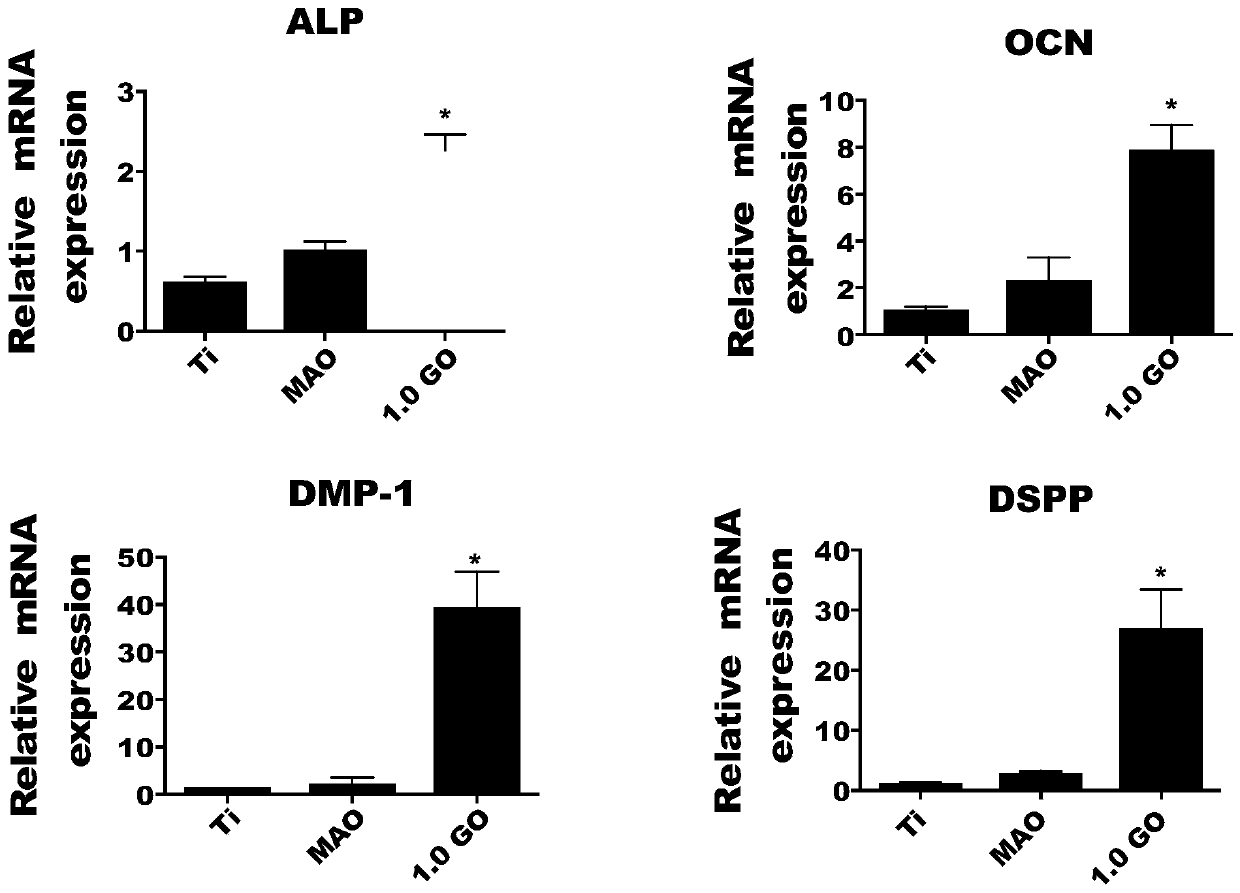Application of surface-modified titanium and titanium alloy for dental pulp coronal sealing
A technology of surface modification and titanium alloy, which is applied in the application field of surface modification titanium and titanium alloy, and dental pulp coronal sealing, can solve the problems of prone to cracks or fine channels, increase of pH value, and dentin integration performance to be improved, etc. , to avoid cytotoxicity and promote adhesion
- Summary
- Abstract
- Description
- Claims
- Application Information
AI Technical Summary
Problems solved by technology
Method used
Image
Examples
Embodiment 1
[0047] Preparation of micro-arc oxidation composite graphene oxide coating on titanium sheet.
[0048] Embodiment 1 steps are as follows:
[0049]1. Polish titanium sheets with a size of 20*20*2mm with 320, 800, and 1200 mesh sandpaper in sequence, and place them in ethanol solution and propanol solution for ultrasonic cleaning for 1 hour each.
[0050] 2. Configure an electrolyte solution containing 0.1mol / L calcium acetate monohydrate and 0.03mol / L sodium dihydrogen phosphate, immerse the titanium alloy in the solution, and select the appropriate electrical parameters, namely 400v, 50Hz, 10min.
[0051] 3. Wash the micro-arc oxidized titanium sheet with deionized water, dry it with nitrogen gas, and soak it in 10mol / L NaOH solution at 60°C for 24h. The function of NaOH is to hydroxylate the metal surface so as to chemically react with the next solution to increase hydrophilicity.
[0052] 4. Clean the titanium sheet until the pH is 7. After drying with nitrogen gas, soak ...
Embodiment 2
[0055] Effects of micro-arc oxidation composite graphene oxide on the biological activity of human dental pulp stem cells (hDPSCs) in vitro
[0056] Step 1. Isolation and culture of human dental pulp stem cells
[0057] (1) Collect the clinically extracted teeth due to impaction and orthodontics, and rinse them with sterile PBS solution for 3 times; cut the neck of the teeth with a dental split drill to expose the pulp cavity;
[0058] (2) Pick out the pulp tissue with a sterile pulp extraction needle and place it in a petri dish;
[0059] (3) Use sterile ophthalmic scissors to cut the pulp tissue into pieces about 1*1 mm in size; dip Vaseline on the four corners of the cover slip and cover the cut pulp tissue to prevent the tissue pieces from floating;
[0060] (4) Finally, add MEM culture solution containing 20% fetal bovine serum and 1% double antibody to the culture dish at 37°C and 5% CO 2 Cultivate in the incubator for 7 days and observe. When the cells climb out fro...
PUM
 Login to View More
Login to View More Abstract
Description
Claims
Application Information
 Login to View More
Login to View More - R&D
- Intellectual Property
- Life Sciences
- Materials
- Tech Scout
- Unparalleled Data Quality
- Higher Quality Content
- 60% Fewer Hallucinations
Browse by: Latest US Patents, China's latest patents, Technical Efficacy Thesaurus, Application Domain, Technology Topic, Popular Technical Reports.
© 2025 PatSnap. All rights reserved.Legal|Privacy policy|Modern Slavery Act Transparency Statement|Sitemap|About US| Contact US: help@patsnap.com



